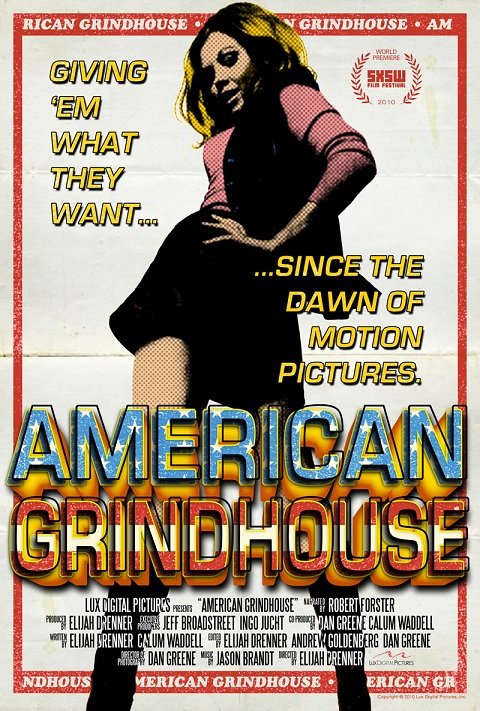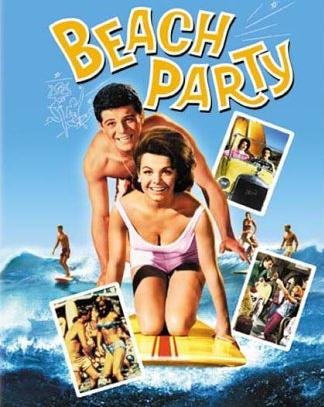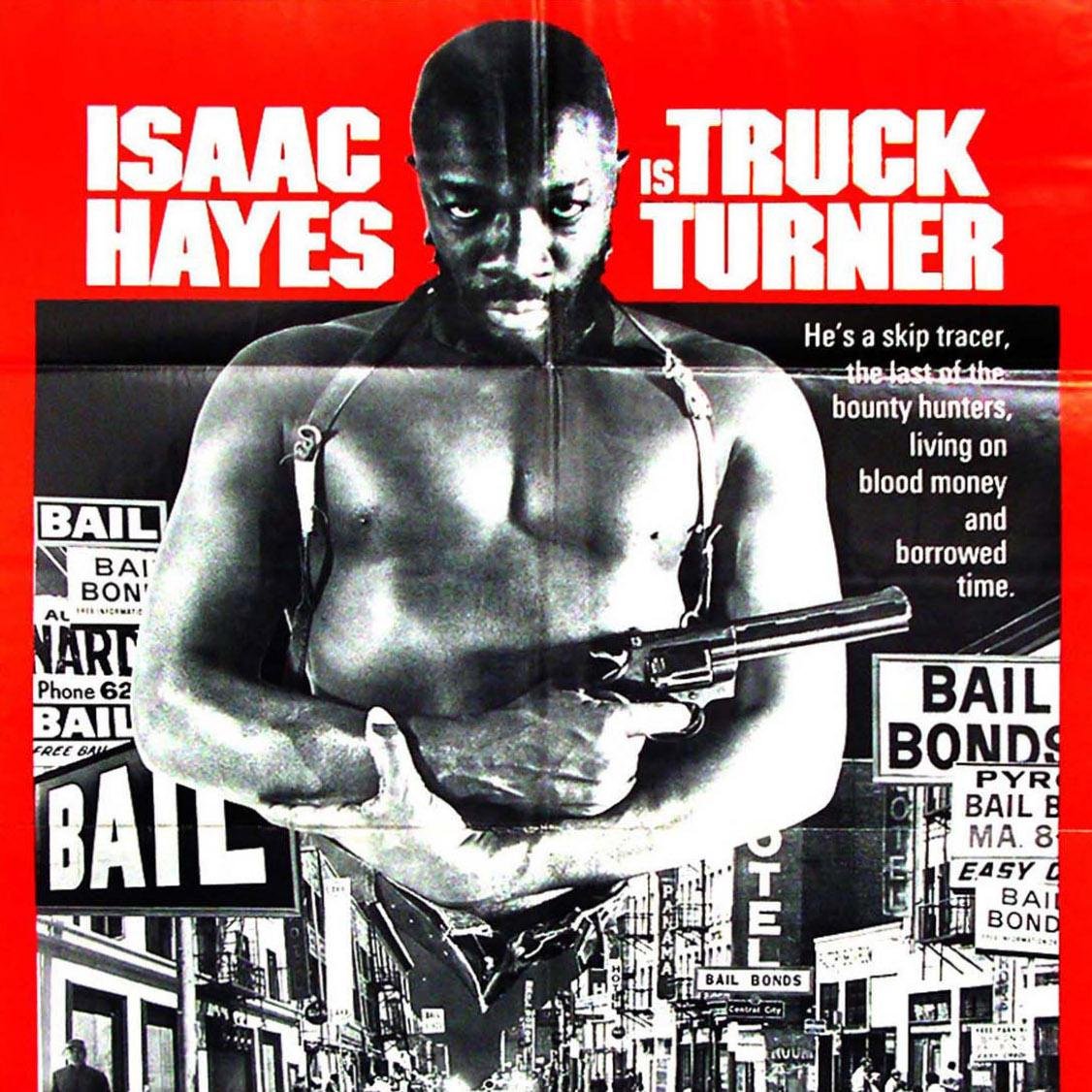AMERICAN GRINDHOUSE: Through The Sleaze-Cinema Past, (A Little Too) Briskly
Quentin Tarantino and Robert Rodriguez didn't succeed in making a box-office hit with their b-movie tribute Grindhouse but they did succeed in making the term "grindhouse" a buzz word amongst cult movie aficionados. It even established a certain level of awareness with the multiplex moviegoing crowd and became a handy marketing term for businesses trying to move cult fare on the home video market. That said, the term remains a bit nebulous in meaning - one of those words that everyone in the scene knows and uses but one that has never been nailed down to a specific, finite definition. American Grindhouse, a recent documentary by Elijah Drenner, takes a swing at making sense of the grindhouse concept for viewers of all kinds. Using cult movie historians Eddie Muller and Eric Schaefer, the first half-hour does a beautiful job of setting up the backstory of grindhouse filmmaking. It walks the audience through how carny types infiltrated the outer edges of the film business when the Hays Code tamed the racy content of early Hollywood fare and a government decision busted up the monopoly major studios held on movie theaters. These bits are spiced up effectively with clips from demented early trash-fare like birth-of-a-baby movies and Dwain Esper's unforgettably demented Maniac.Unfortunately, the documentary begins to lose focus as it moves into its remaining 50 minutes. Part of the problem is that the film is so intent on being a short piece - it runs a mere 82 minutes with credits - that it glosses over the distinction between grindhouse films and exploitation films. Fans could argue this point all day but Your Humb
American Grindhouse, a recent documentary by Elijah Drenner, takes a swing at making sense of the grindhouse concept for viewers of all kinds. Using cult movie historians Eddie Muller and Eric Schaefer, the first half-hour does a beautiful job of setting up the backstory of grindhouse filmmaking. It walks the audience through how carny types infiltrated the outer edges of the film business when the Hays Code tamed the racy content of early Hollywood fare and a government decision busted up the monopoly major studios held on movie theaters. These bits are spiced up effectively with clips from demented early trash-fare like birth-of-a-baby movies and Dwain Esper's unforgettably demented Maniac.Unfortunately, the documentary begins to lose focus as it moves into its remaining 50 minutes. Part of the problem is that the film is so intent on being a short piece - it runs a mere 82 minutes with credits - that it glosses over the distinction between grindhouse films and exploitation films. Fans could argue this point all day but Your Humb le Reviewer's understanding is that grindhouse is essentially a subset of exploitation fare, namely hard-hitting and intense material that was able to keep the attention of rowdy audiences in rundown inner-city theaters. In other words, all grindhouse films are exploitation films but all exploitation films aren't necessarily grindhouse films.American Grindhouse sidesteps this issue and broadens its focus to cover all sorts of exploitation fare: some of it fits the grindhouse template, like blaxploitation and Nazi films, but other items are included that will make the grindhouse buff scratch their heads, like a few minutes devoted to the Beach Party series. This segment is fun and makes insightful points about these films allowed A.I.P. to draw in an adult audience to supplement their teenage base - but it really has nothing to do with grindhouse movies. Even worse, some Deuce staples like the kung fu movie are omitted entirely. As a result, the latter 50 minutes or so of American Grindhouse becomes this blitzkrieg travelogue through the history of exploitation cinema that hits some grindhouse touchstones and misses a lot of oth
le Reviewer's understanding is that grindhouse is essentially a subset of exploitation fare, namely hard-hitting and intense material that was able to keep the attention of rowdy audiences in rundown inner-city theaters. In other words, all grindhouse films are exploitation films but all exploitation films aren't necessarily grindhouse films.American Grindhouse sidesteps this issue and broadens its focus to cover all sorts of exploitation fare: some of it fits the grindhouse template, like blaxploitation and Nazi films, but other items are included that will make the grindhouse buff scratch their heads, like a few minutes devoted to the Beach Party series. This segment is fun and makes insightful points about these films allowed A.I.P. to draw in an adult audience to supplement their teenage base - but it really has nothing to do with grindhouse movies. Even worse, some Deuce staples like the kung fu movie are omitted entirely. As a result, the latter 50 minutes or so of American Grindhouse becomes this blitzkrieg travelogue through the history of exploitation cinema that hits some grindhouse touchstones and misses a lot of oth ers.Another problem is the limitation of the filmmaker's resources. To their credit, they got some impressive names to appear here - John Landis, Joe Dante and William Lustig among them - but sometimes these figures are strangely underutilized. For example, Lustig never gets to discuss in detail the grindhouse favorites he made as a director (the unforgettably sleazy and creepy Maniac is altogether ignored). Conversely, some minor figures get a surprising amount of screen time seemingly because they were available: a notable case is James Gordon White, a lesser-known screenwriter who gets more screen time than Larry Cohen.Despite these problems, American Grindhouse is fun to watch. It's dense with useful information and slickly edited, with tons of clips used to effectively counterpoint the comments of its participants. It overflows with a trash-cinephile's love for exploitation cinema
ers.Another problem is the limitation of the filmmaker's resources. To their credit, they got some impressive names to appear here - John Landis, Joe Dante and William Lustig among them - but sometimes these figures are strangely underutilized. For example, Lustig never gets to discuss in detail the grindhouse favorites he made as a director (the unforgettably sleazy and creepy Maniac is altogether ignored). Conversely, some minor figures get a surprising amount of screen time seemingly because they were available: a notable case is James Gordon White, a lesser-known screenwriter who gets more screen time than Larry Cohen.Despite these problems, American Grindhouse is fun to watch. It's dense with useful information and slickly edited, with tons of clips used to effectively counterpoint the comments of its participants. It overflows with a trash-cinephile's love for exploitation cinema and will leave even b-movie veterans compiling a mental list of films they need to check out.Unfortunately, the erratic focus and too-brief running time result in an experience that lets the real meaning of grindhouse slip away as it bounds from point to point. One walks away feeling that perhaps this should have been done as a long-form documentary with a sharper, more specific focus, like the excellent A Nightmare On Elm Street series documentary Never Sleep Alone. Thus, American Grindhouse is best viewed as a fun clip compendium/interview piece combo rather than as a definitive guide to the grindhouse experience.
and will leave even b-movie veterans compiling a mental list of films they need to check out.Unfortunately, the erratic focus and too-brief running time result in an experience that lets the real meaning of grindhouse slip away as it bounds from point to point. One walks away feeling that perhaps this should have been done as a long-form documentary with a sharper, more specific focus, like the excellent A Nightmare On Elm Street series documentary Never Sleep Alone. Thus, American Grindhouse is best viewed as a fun clip compendium/interview piece combo rather than as a definitive guide to the grindhouse experience.


